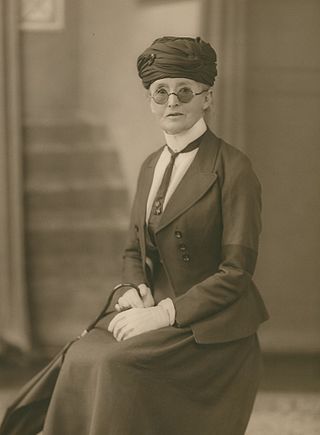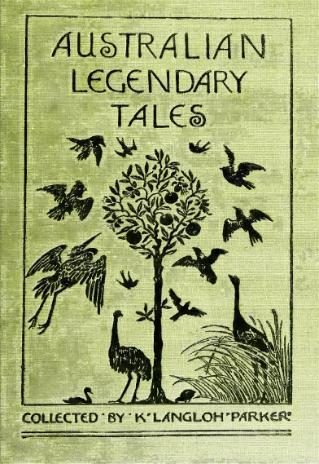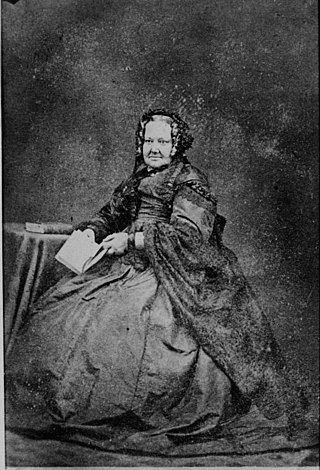Related Research Articles

Fitzgerald River National Park is a national park in the Shires of Ravensthorpe and the Jerramungup in Western Australia, 419 kilometres (260 mi) southeast of Perth. The park is recognised on Australia's National Heritage List for its outstanding diversity of native plant species, including many plants which are unique to the local area.

The Aboriginal Tasmanians are the Aboriginal people of the Australian island of Tasmania, located south of the mainland. For much of the 20th century, the Tasmanian Aboriginal people were widely, and erroneously, thought of as being an extinct cultural and ethnic group that had been intentionally exterminated by white settlers. Contemporary figures (2016) for the number of people of Tasmanian Aboriginal descent vary according to the criteria used to determine this identity, ranging from 6,000 to over 23,000.
The human history of Western Australia commenced between 40,000 and 60,000 years ago with the arrival of Aboriginal Australians on the northwest coast. The first inhabitants expanded across the east and south of the continent.

Daisy May Bates, CBE was an Irish-Australian journalist, welfare worker and self-taught anthropologist who conducted fieldwork amongst several Indigenous nations in western and southern Australia. Bates was a lifelong student of Australian Aboriginal culture and society and was the first anthropologist to carry out a detailed study of Australian Aboriginal culture. Some Aboriginal people referred to Bates by the courtesy name Kabbarli "grandmother."
The Western Australian Museum is a statutory authority within the Culture and the Arts Portfolio, established under the Museum Act 1969.
Midgegooroo was an Aboriginal Australian elder of the Nyungar nation, who played a key role in Aboriginal resistance to white settlement in the area of Perth, Western Australia. Everything documented about Midgegooroo is mediated through the eyes of the colonisers, some of whom, notably G.F. Moore, Robert Menli Lyon and Francis Armstrong, derived their information from discussions with contemporary Noongar people, in particular the son of Midgegooroo, Yagan. Largely due to his exploits in opposing colonisation and his relationship with Lyon and Moore, Yagan has a much sharper historical profile than his father. Midgegooroo was executed by firing squad and without trial under the authority of Lieutenant Governor Frederick Irwin in 1833.

Jerramungup is a Western Australian town located in the Great Southern agricultural region, 454 kilometres (282 mi) southeast of Perth and 6 kilometres (4 mi) west of the Gairdner River.

The Pinjarra massacre, also known as the Battle of Pinjarra, occurred on 28 October 1834 in Pinjarra, Western Australia when a group of Binjareb Noongar people were attacked by a detachment of 25 soldiers, police, and settlers led by Governor James Stirling. According to Stirling, "about 60 or 70" of the Binjareb people were present at the camp and John Roe, who also participated, estimated about 70–80. This roughly agrees with an estimate of 70 by an unidentified eyewitness. The attack at Pinjarra was in response to sustained aggression by the Binjarebs, including robberies and murder of settlers and members of other Nyungar tribes.

The Koreng, also spelled Goreng, are an indigenous Noongar people of south-west of Western Australia.
This is a timeline of Aboriginal history of Western Australia.
Hassell, also von Hassell, is an English and German surname. Notable people with the surname include the following:

Albert Young Hassell was a prominent Australian pastoralist and politician.

Australian Legendary Tales is a translated collection of stories told to K. Langloh Parker by Australian Aboriginal people.
Margaret Susan "Peggy" Brock was an Australian historian and writer. Her major areas of interest were colonial and Indigenous history in Australia, the Pacific and parts of Canada and Africa, with particular interest in Australian Aboriginal women. Her work continues to be cited in national and international debates over Indigenous policy. Born in Adelaide, she took up academic positions and was at the end of her career emeritus professor at Edith Cowan University in Perth, Western Australia.

Anne Camfield was a photographer, pioneer teacher and headmistress in Western Australia. She founded the first school for Indigenous children in Western Australia, called Annesfield.
Daniel Sutherland Davidson was an American anthropologist who also did important work among the Australian Aborigines in the 1930s.
The Amangu are an indigenous Yamatji people of the mid-western region of Western Australia.

Wiilman are an indigenous Noongar people from the Wheatbelt, Great Southern and South West regions of Western Australia. Variant spellings of the name include Wilman, Wirlomin, Wilmen and Wheelman. Wiilman is the endonym.
The Yingkarta people, also written Inggarda and Ingarda, are an Aboriginal Australian people of the Gascoyne region of Western Australia.
References
- 1 2 3 Izett, EK 2014, 'Breaking new ground: early Australian ethnography in colonial women's writing', Doctor of Philosophy.
- ↑ "Biography". Parliament of Western Australia . Retrieved 6 September 2015.
- ↑ Arnold, Murray (2015). A journey travelled : Aboriginal-European relations at Albany and the surrounding region from first contact to 1926. Crawley, Western Australia: UWA Publishing. pp. 43–44. ISBN 978-1-74258-663-2.
- ↑ Walker, Rosanne (1997). "Hassell, Ethel - Biographical entry - Encyclopedia of Australian Science". Encyclopedia of Australian Science. The University of Melbourne eScholarship Research Centre www.eoas.info. Retrieved 6 October 2018.
- ↑ Mrs A.Y. Hassell, Early Memories of Albany (Albany, WA: Advr. Print, c. 1910). 26 pp.